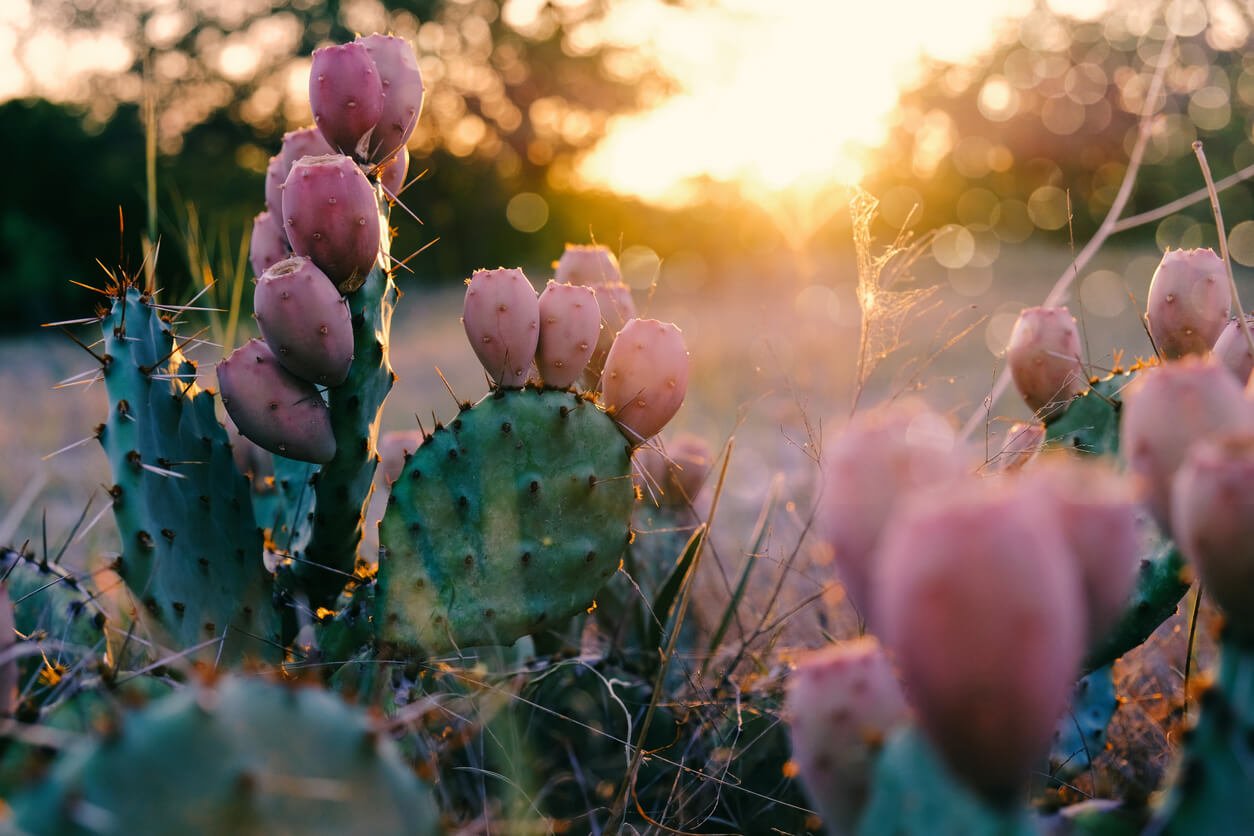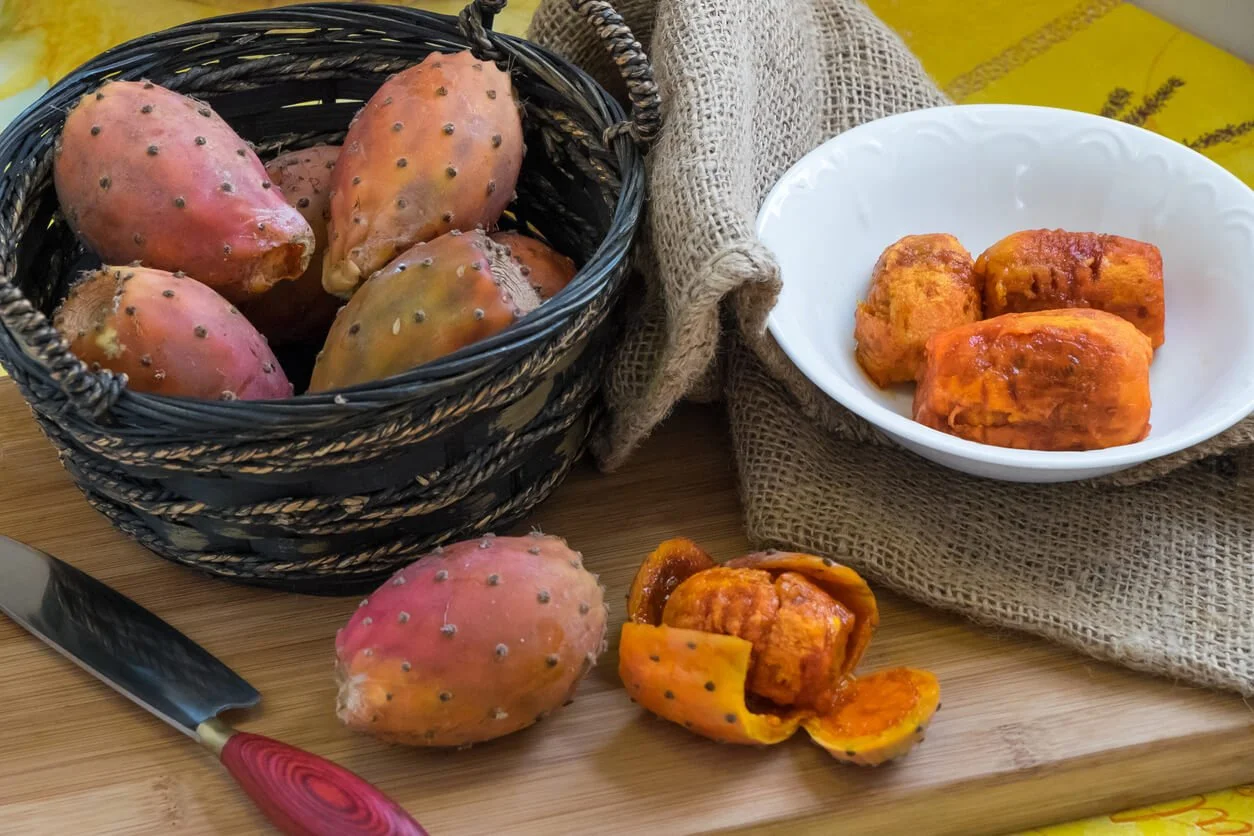The Humble Prickly Pear - Preparation Tips and More!
Discover > Texas Home Cooking > The Humble Prickly Pear - Preparation Tips and More!
Prickly pear cactus fruit is a delicious treat, but to many, preparation and handling can be a daunting task. It is native to Texas and has been a part of the state's history for centuries. The fruit was once a staple of the diet of Native Americans in the region and is still enjoyed by many today.
If you're new to prickly pear, or just want to learn more about this Texas favorite, read on for some tips on preparation and handling. With a little know-how, you'll be enjoying delicious prickly pear fruit in no time!
P.S. Prickly Pear Fruit is also known as Tuna (no relation to the fish)
The Prickly Pear Cactus
The prickly pear cactus is a member of the cactus family and is native to North America. The plant can grow up to 12 feet tall and is covered in sharp spines. The fruit of the prickly pear cactus is oval-shaped and ranges in color from green to red or purple.
The prickly pear has been a part of Texas history for centuries. The fruit was once a staple of the diet of Native Americans in the region and is still enjoyed by many today. In the early days of Texas settlement, the prickly pear was used as a natural fence to keep livestock from roaming. And now that I think about it, it's a great idea as a natural boundary.
What Does Prickly Pear Taste Like?
The taste of prickly pear fruit is often described as a cross between a watermelon and a strawberry, others compare it to kiwis, and some even say that there are hints of bubblegum in the taste. The flesh of the fruit is sweet and juicy with a slightly tart flavor. The seeds of the fruit are small and crunchy, similar to the seeds of watermelon but completely edible. I actually know someone who eats prickly pears just for the crunch of the seeds!
It may taste different to different folks, but one thing they all agree on is that it's pretty darn good and you should try it at least once!
Harvesting Prickly Pear or Tuna Fruit
Prickly pear or tuna fruit can be harvested from August through October. The best time to pick them is in the morning after the dew has evaporated. Wear gloves and long sleeves when handling the cactus pads, as the spines can be quite sharp.
How to Tell if Prickly Pear is Ready for Harvest?
Prickly pears are typically ready for harvest in late August to early October. The easiest way to tell if they are ripe is to gently squeeze the fruit. If it yields to pressure, it is ready to eat! Remember, be extra careful when checking as the spikes may accidentally puncture your skin.
To harvest the fruit, simply cut off the pad with a sharp knife, being careful not to cut yourself. Once you have a good harvest of cactus pads, it's time to remove the fruit.
The easiest way to do this is to place the cactus pads in a large pot or tub of water. Let them soak for about 30 minutes. This will help loosen the spines on the fruit.
After soaking, remove the cactus pads from the water and use a sharp knife to cut off the ends of the fruit. Be sure to wear gloves when doing this, as the spines can still be sharp.
Once the ends are removed, you can simply peel off the skin of the fruit. The skin is edible, but many people prefer to remove it.
The prickly pear fruit is now ready to eat! You can enjoy it fresh, or use it in any number of recipes.
What About Nopales?
Once you've harvested the prickly pear fruit or the tuna, don't throw the pads or nopales away! They're quite tasty in their own right.
Nopales are the pads of the prickly pear cactus, and are a popular ingredient in Mexican cuisine. They can be eaten fresh, or cooked in a variety of dishes.
Nopales have a slightly tart and acidic flavor, similar to that of green beans. They are often used in savory dishes, but can also be used in sweet dishes as well. The texture of nopales is slightly slimy, similar to okra. When cooked, they become tender and can be easily mashed or cut
To prepare nopales, start by trimming off the sharp spines with a knife. You can then either cook them whole, or slice them into strips or cubes. Ensure that you have ALL of the spines out by gently feeling with your
If you are going to cook them whole, simply boil the nopales for 10 minutes, or until they are tender. Once cooked, they can be eaten as is, or used in any number of dishes.
If you choose to slice or dice the nopales, you can fry them, or add them to stews or soups. They are versatile ingredients that can be used in many different ways.
Our Favorite Prickly Pear Recipes
Since Prickly Pear is very fruity, yet mild at the same time, it's quite versatile and can be used in sweet dishes, savory dishes, baked goods, and even drinks!
1. Prickly Pear Margaritas
2. Prickly Pear Jelly
3. Grilled Prickly Pears
4. Roasted Prickly Pear Salad
5. Prickly Pear Sorbet
6. Fried Prickly Pear Chips
7. Prickly Pear Protein Shake
8. Prickly Pear Smoothie Bowl
9. Prickly Pear Tart
10. Prickly Pear Cake
P.S. We'll be adding the individual recipes to the recipe section here so be sure to keep on checking!
Some Health Benefits of Consuming Prickly Pears
Prickly Pear cactus fruit is a great source of dietary fiber, vitamins C and K, and magnesium. It also contains small amounts of calcium, iron, potassium, and zinc. Additionally, prickly pear cactus fruit is a good source of antioxidants.
Prickly pear cactus fruit has a variety of health benefits. The dietary fiber in prickly pear cactus fruit can help to regulate digestion, and the antioxidants may help to protect cells from damage. Additionally, the vitamins and minerals present in prickly pear cactus fruit can help to support overall health.
There are many ways to incorporate prickly pear cactus fruit into your diet. You can add it to smoothies or juices, use it as a topping on oatmeal or yogurt, bake it into pies or muffins, or even make jam or
So there you have it - everything you need to know about prickly pear cactus fruit! With these tips, you'll be able to enjoy this delicious Texas delicacy.







